- Blog Categories
- Project Management
- Agile Management
- IT Service Management
- Cloud Computing
- Business Management
- Business Intelligence
- Quality Engineer
- Cyber Security
- Career
- Big Data
- Programming
- Most Popular Blogs
- PMP Exam Schedule for 2024: Check PMP Exam Date
- Top 60+ PMP Exam Questions and Answers for 2024
- PMP Cheat Sheet and PMP Formulas To Use in 2024
- What is PMP Process? A Complete List of 49 Processes of PMP
- Top 15+ Project Management Case Studies with Examples 2024
- Top Picks by Authors
- Top 170 Project Management Research Topics
- What is Effective Communication: Definition
- How to Create a Project Plan in Excel in 2024?
- PMP Certification Exam Eligibility in 2024 [A Complete Checklist]
- PMP Certification Fees - All Aspects of PMP Certification Fee
- Most Popular Blogs
- CSM vs PSM: Which Certification to Choose in 2024?
- How Much Does Scrum Master Certification Cost in 2024?
- CSPO vs PSPO Certification: What to Choose in 2024?
- 8 Best Scrum Master Certifications to Pursue in 2024
- Safe Agilist Exam: A Complete Study Guide 2024
- Top Picks by Authors
- SAFe vs Agile: Difference Between Scaled Agile and Agile
- Top 21 Scrum Best Practices for Efficient Agile Workflow
- 30 User Story Examples and Templates to Use in 2024
- State of Agile: Things You Need to Know
- Top 24 Career Benefits of a Certifed Scrum Master
- Most Popular Blogs
- ITIL Certification Cost in 2024 [Exam Fee & Other Expenses]
- Top 17 Required Skills for System Administrator in 2024
- How Effective Is Itil Certification for a Job Switch?
- IT Service Management (ITSM) Role and Responsibilities
- Top 25 Service Based Companies in India in 2024
- Top Picks by Authors
- What is Escalation Matrix & How Does It Work? [Types, Process]
- ITIL Service Operation: Phases, Functions, Best Practices
- 10 Best Facility Management Software in 2024
- What is Service Request Management in ITIL? Example, Steps, Tips
- An Introduction To ITIL® Exam
- Most Popular Blogs
- A Complete AWS Cheat Sheet: Important Topics Covered
- Top AWS Solution Architect Projects in 2024
- 15 Best Azure Certifications 2024: Which one to Choose?
- Top 22 Cloud Computing Project Ideas in 2024 [Source Code]
- How to Become an Azure Data Engineer? 2024 Roadmap
- Top Picks by Authors
- Top 40 IoT Project Ideas and Topics in 2024 [Source Code]
- The Future of AWS: Top Trends & Predictions in 2024
- AWS Solutions Architect vs AWS Developer [Key Differences]
- Top 20 Azure Data Engineering Projects in 2024 [Source Code]
- 25 Best Cloud Computing Tools in 2024
- Most Popular Blogs
- Company Analysis Report: Examples, Templates, Components
- 400 Trending Business Management Research Topics
- Business Analysis Body of Knowledge (BABOK): Guide
- ECBA Certification: Is it Worth it?
- How to Become Business Analyst in 2024? Step-by-Step
- Top Picks by Authors
- Top 20 Business Analytics Project in 2024 [With Source Code]
- ECBA Certification Cost Across Countries
- Top 9 Free Business Requirements Document (BRD) Templates
- Business Analyst Job Description in 2024 [Key Responsibility]
- Business Analysis Framework: Elements, Process, Techniques
- Most Popular Blogs
- Best Career options after BA [2024]
- Top Career Options after BCom to Know in 2024
- Top 10 Power Bi Books of 2024 [Beginners to Experienced]
- Power BI Skills in Demand: How to Stand Out in the Job Market
- Top 15 Power BI Project Ideas
- Top Picks by Authors
- 10 Limitations of Power BI: You Must Know in 2024
- Top 45 Career Options After BBA in 2024 [With Salary]
- Top Power BI Dashboard Templates of 2024
- What is Power BI Used For - Practical Applications Of Power BI
- SSRS Vs Power BI - What are the Key Differences?
- Most Popular Blogs
- Data Collection Plan For Six Sigma: How to Create One?
- Quality Engineer Resume for 2024 [Examples + Tips]
- 20 Best Quality Management Certifications That Pay Well in 2024
- Six Sigma in Operations Management [A Brief Introduction]
- Top Picks by Authors
- Six Sigma Green Belt vs PMP: What's the Difference
- Quality Management: Definition, Importance, Components
- Adding Green Belt Certifications to Your Resume
- Six Sigma Green Belt in Healthcare: Concepts, Benefits and Examples
- Most Popular Blogs
- Latest CISSP Exam Dumps of 2024 [Free CISSP Dumps]
- CISSP vs Security+ Certifications: Which is Best in 2024?
- Best CISSP Study Guides for 2024 + CISSP Study Plan
- How to Become an Ethical Hacker in 2024?
- Top Picks by Authors
- CISSP vs Master's Degree: Which One to Choose in 2024?
- CISSP Endorsement Process: Requirements & Example
- OSCP vs CISSP | Top Cybersecurity Certifications
- How to Pass the CISSP Exam on Your 1st Attempt in 2024?
- Most Popular Blogs
- Best Career options after BA [2024]
- Top Picks by Authors
- Top Career Options & Courses After 12th Commerce in 2024
- Recommended Blogs
- 30 Best Answers for Your 'Reason for Job Change' in 2024
- Recommended Blogs
- Time Management Skills: How it Affects your Career
- Most Popular Blogs
- Top 28 Big Data Companies to Know in 2024
- Top Picks by Authors
- Top Big Data Tools You Need to Know in 2024
- Most Popular Blogs
- Web Development Using PHP And MySQL
- Top Picks by Authors
- Top 30 Software Engineering Projects in 2024 [Source Code]
- More
- Tutorials
- Practise Tests
- Interview Questions
- Free Courses
- Agile & PMP Practice Tests
- Agile Testing
- Agile Scrum Practice Exam
- CAPM Practice Test
- PRINCE2 Foundation Exam
- PMP Practice Exam
- Cloud Related Practice Test
- Azure Infrastructure Solutions
- AWS Solutions Architect
- AWS Developer Associate
- IT Related Pratice Test
- ITIL Practice Test
- Devops Practice Test
- TOGAF® Practice Test
- Other Practice Test
- Oracle Primavera P6 V8
- MS Project Practice Test
- Project Management & Agile
- Project Management Interview Questions
- Release Train Engineer Interview Questions
- Agile Coach Interview Questions
- Scrum Interview Questions
- IT Project Manager Interview Questions
- Cloud & Data
- Azure Databricks Interview Questions
- AWS architect Interview Questions
- Cloud Computing Interview Questions
- AWS Interview Questions
- Kubernetes Interview Questions
- Web Development
- CSS3 Free Course with Certificates
- Basics of Spring Core and MVC
- Javascript Free Course with Certificate
- React Free Course with Certificate
- Node JS Free Certification Course
- Data Science
- Python Machine Learning Course
- Python for Data Science Free Course
- NLP Free Course with Certificate
- Data Analysis Using SQL
- Home
- Blog
- Project Management
- Quality Management And Control Tools
Quality Management And Control Tools
Updated on Mar 25, 2025 | 4 min read | 8.6k views
Share:
Quality is one of the modern project constraints which lead the project management processes and activates, according to PMI's PMBOK 5th edition. To learn more about methodologies and tools, check the online PMP course and advance your career in project management. There are 3 processes of quality management throughout the project lifecycle. The processes are :-
1-plan quality management
2- perform quality assurance
3- control quality
Now we will talk about a group of tools which can be used to manage and control quality throughout the project lifecycle these group of tools called can be " Quality Management And Control Tools " it consists of seven Tools as following:
1-Affinity diagrams :
It divide the ideas in main categories so we can organize the ideas to do something or to solve a problem . as an example when we divide the main deliverables of the WBS into low levels of work until we reach the level of work packages
Master Right Skills & Boost Your Career
Avail your free 1:1 mentorship session
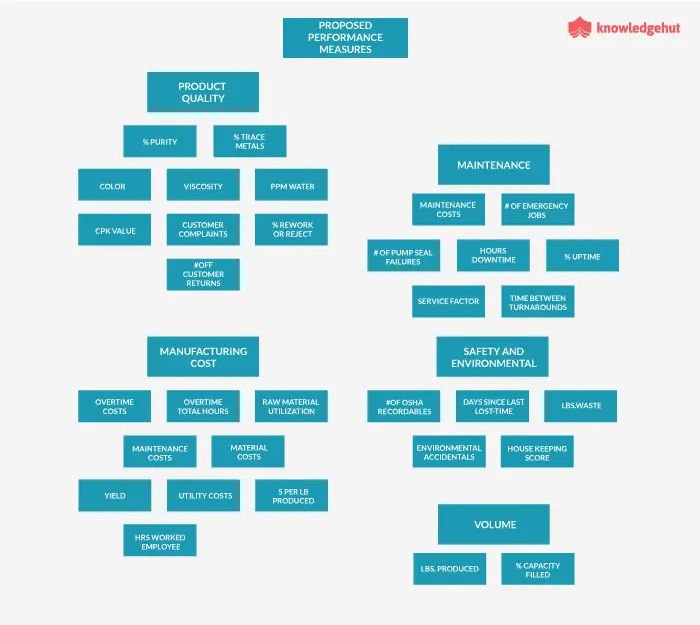
2- Process decision program charts (PdPc):
According to American Society Of Quality (ASQ) these tool links between objective and the steps to achieve these objective via using a tree of 5 level which the first is the objective , the second is the main component of the system , the third is the tasks of each component , the forth is the problems that can occur while we do the tasks of the third level and finally the fifth level is the actions that can we take to avoid each problem of the problems in the fifth level , after that we can choice the suitable actions depending on its cost and time so these tool is very useful in making contingency plans or change it .
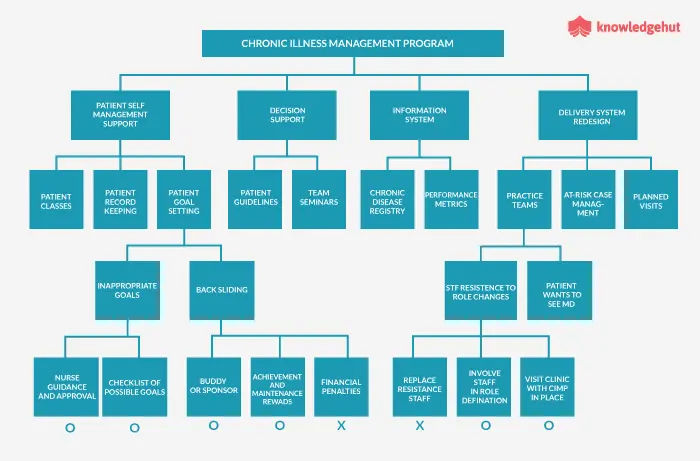
3- Interrelationship digraphs :
A problem solving Tool used in moderately complex scenarios , It can links up to 50 relevant items of causes and effects of any problem in the system . each item is represented as a node , the relation is represented as archer from the input node ( the cause) to the output node ( the effect) .on each node we write the number of inputs and outputs of these node . the node with the largest number of outputs consider a main factor that cause the problem and by avoid it there are a big chance to solve the problem .
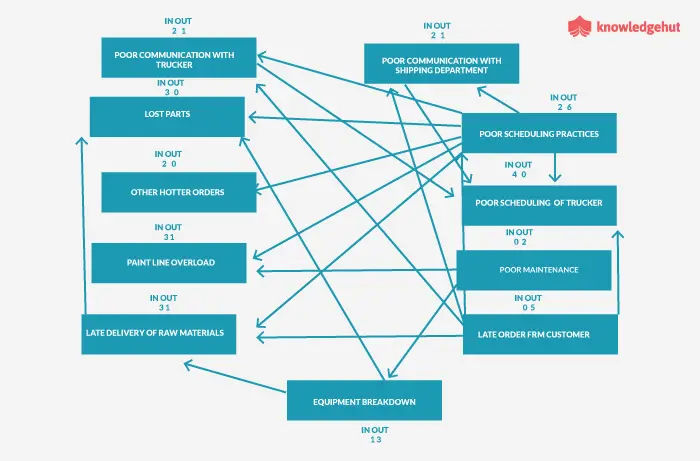
4- Tree diagrams:
Also known as systematic diagrams . it represent a decomposition hierarchy such as work breakdown structure (WBS) , organizational breakdown structure (OBS) or resource breakdown structure (RBS) . it represent the relationship between the parent node and the child node also we can use it on decomposing the risks to its components as in the risk breakdown structure. it can also used in decision trees .
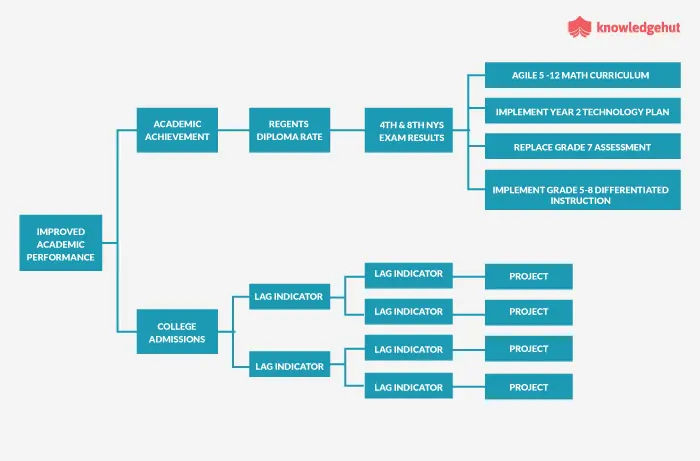
5- Prioritization matrices :
A Prioritization Matrix is a technique that identify which problem is the most important to work on solving it or which decision is the more suitable to choose .the problems or choices are generated from brainstorming or other ideas generating techniques . then we determine the criteria which are important in measuring the problem and give it a value that show its important between other criteria's that can be used . these criteria can be time , cost , frequency , feasibility or so on then we take each problem and measure it be each weighed criteria , then determine the total score of these problem , then we reach to the most important problem which have the largest total score
| Problem Solution | Frequency.6 | Duration .5 | Cost.7 | Total points |
| Problem 1 | 5 | 1 | 2 | 4.9 |
| Problem 2 | 4 | 2 | 5 | 6.9 |
| Problem 3 | 3 | 1 | 1 | 3 |
From the previous table problem 2 is the most important problem so we must solve it before problem 1 and 3 .
6- Activity network diagrams:
A tool consists of two forms : Activity on Node (AON) and Activity on Arrow (AOA) .
These tool used to schedule the activists of the project by linking activities to each others . the main advantages of these method over other scheduling method such as Gantt chart is that it can determine the critical path of the project also it can show the predecessor and successor of any activity so we can use it when we want to rearrange the activity network.

7-Matrix diagrams:
According to PMBOK 5th Edition the matrix diagram is a quality control tool that used in data analysis to show the strength of relationships between factors, causes, and objectives that exist between the rows and columns that form the matrix.
There are many types of matrices that all have its own relationship between columns and rows as : L-Shaped , T-Shaped , C-shaped and Y-shaped . from these relationships we can correlate between cause and effect so we can solve the problem or control its effects .
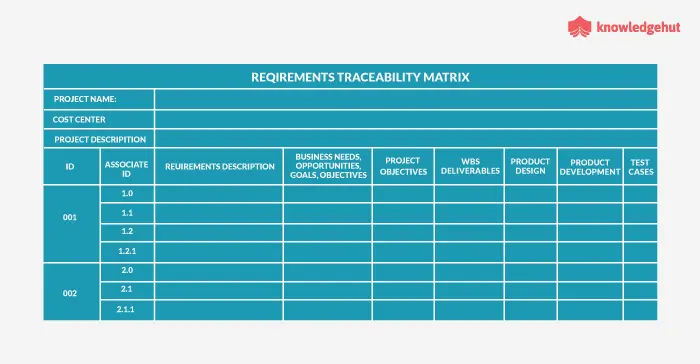
At the end we can say that : each tool of the previous tools is very useful in some cases but all of them are used in quality management and control activates throughout all the project lifecycle .
Top Cities where Knowledgehut Conduct Project Management Certification Training Course Online
Elevate your career with our best online PRINCE2 course. Learn the art of project management and achieve new heights.
Get Free Consultation
By submitting, I accept the T&C and
Privacy Policy
Ready to master Project Management Career in 2025?


